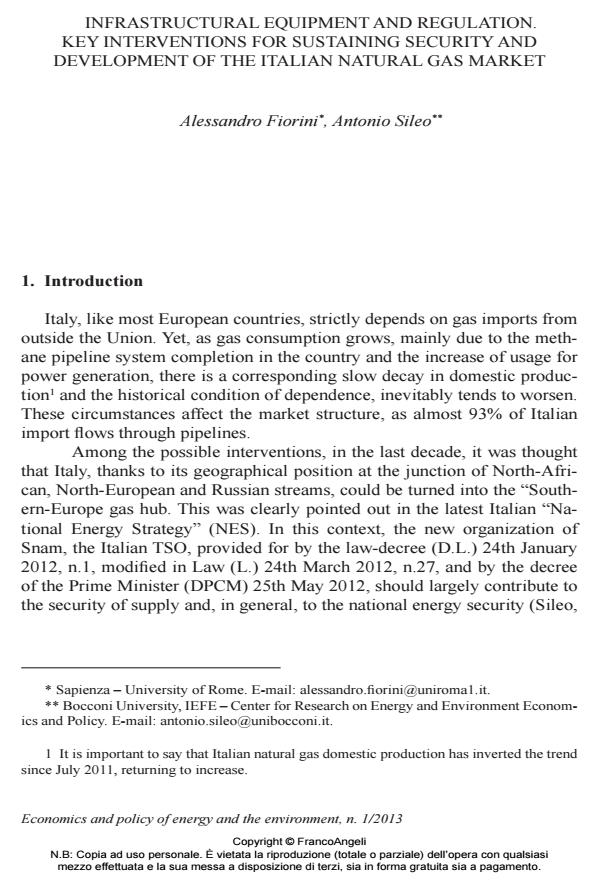Infrastructural equip ment and regulati on. Key interv entions for sustaining security and development of the Italian natural gas market
Titolo Rivista ECONOMICS AND POLICY OF ENERGY AND THE ENVIRONMENT
Autori/Curatori Alessandro Fiorini, Antonio Sileo
Anno di pubblicazione 2013 Fascicolo 2013/1
Lingua Inglese Numero pagine 18 P. 23-40 Dimensione file 637 KB
DOI 10.3280/EFE2013-001002
Il DOI è il codice a barre della proprietà intellettuale: per saperne di più
clicca qui
Qui sotto puoi vedere in anteprima la prima pagina di questo articolo.
Se questo articolo ti interessa, lo puoi acquistare (e scaricare in formato pdf) seguendo le facili indicazioni per acquistare il download credit. Acquista Download Credits per scaricare questo Articolo in formato PDF

FrancoAngeli è membro della Publishers International Linking Association, Inc (PILA)associazione indipendente e non profit per facilitare (attraverso i servizi tecnologici implementati da CrossRef.org) l’accesso degli studiosi ai contenuti digitali nelle pubblicazioni professionali e scientifiche
The paper compares potentialities and criticalities of the Italian gas market. The aim of this work is not only the creation of a competitive market, which can guarantee the security of supply, but also the ambitious perspective of turning Italy into the Southern European gas hub. These challenges have as their most important obstacle a complex scheme of relations, involving both National and European governments. In this context, the most debated evolution is certainly the complete (ownership) unbundling between Eni, the Italian gas market incumbent, and Snam Rete Gas, the Italian TSO. Another discussed issue is the efforts of infrastructural expansion, supported by new specific regulations of the Italian Authority for electricity and gas. The purpose of this expansion, apart from the security of supply and energy security, is to have a direct influence on pricing and trade, in order to revaluate Italy’s role in the European energy arena.
Parole chiave:Security of supply, energy security, gas hub, take-or-pay contracts, excess of capacity JEL classification: L51, Q41, Q48
- Challenges and policy implications of gas reform in Italy and Ukraine: Evidence from a benchmarking analysis Anatoliy G. Goncharuk, Corrado lo Storto, in Energy Policy /2017 pp.456
DOI: 10.1016/j.enpol.2016.10.037 - Natural gas stakeholders during price growth: a case of Ukraine Anatoliy G. Goncharuk, in International Journal of Energy Sector Management /2015 pp.94
DOI: 10.1108/IJESM-04-2014-0004
Alessandro Fiorini, Antonio Sileo, Infrastructural equip ment and regulati on. Key interv entions for sustaining security and development of the Italian natural gas market in "ECONOMICS AND POLICY OF ENERGY AND THE ENVIRONMENT" 1/2013, pp 23-40, DOI: 10.3280/EFE2013-001002